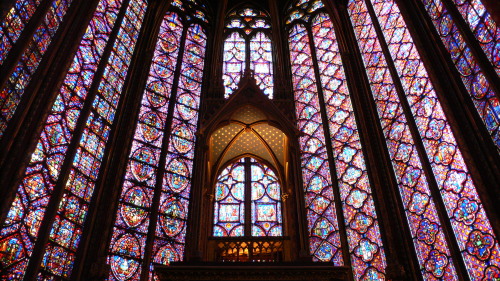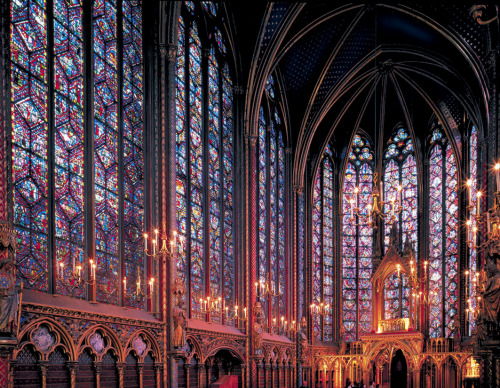Sculpture Details.


Sculpture details.
More Posts from Ancientpansy and Others








Scotland’s World Heritage Sites span millennia—etched in stone, cast in iron, and rooted deep in the land.
On #WorldHeritageDay, we honour the places that carry history forward.
🏛️ Scotland’s UNESCO World Heritage Sites:
St Kilda — A remote archipelago in the Outer Hebrides, notable for its dramatic landscapes, seabird colonies, and 4,000 years of human history. It holds dual status for both natural and cultural heritage.
Old and New Towns of Edinburgh — A unique urban landscape where medieval alleyways meet Georgian elegance, showcasing centuries of architectural and civic development.
Heart of Neolithic Orkney — A collection of prehistoric monuments, including Skara Brae, Maeshowe, the Stones of Stenness, and the Ring of Brodgar, offering insight into Neolithic life.
New Lanark — An 18th-century mill village on the River Clyde, renowned for its role in social reform and industrial innovation under Robert Owen.
The Antonine Wall — The northernmost frontier of the Roman Empire in Britain, representing Roman military engineering and imperial ambition.
The Forth Bridge — A 19th-century cantilever railway bridge spanning the Firth of Forth, celebrated as a masterpiece of engineering and design.
The Flow Country — Designated in 2024, this vast peatland in Caithness and Sutherland is the world’s largest blanket bog, recognised for its ecological importance and role in carbon storage.






May 14th 1754 saw the rules of golf formalised at St Andrews with the foundation of the Society of St Andrews Golfers.
Twenty-two ‘Noblemen and Gentlemen’ contributed to a silver club to be played for annually over the Links of St Andrews. The first winner was Baillie William Landale, a St Andrews’ merchant, who became Captain for the year.
The competition was initially open to all golfers, as had been that of the Leith golfers ten years previously. The Leith golfers were specifically invited and brought their rules with them, which the St Andrews’ golfers used, with a small change to Rule 5. Thus began the foremost club in both Scottish golf history and world golf in general.
The first picture shows the hand-written rules of golf, which appear on the first page of the very first minute book of the Society of St Andrews Golfers. You can see that rule five was maybe amended after the initial rules were written down. The second pic is of James and Alexander Macdonald the sons of Sir Alexander Macdonald of Macdonald, a great Highland chieftain with estates on the Isle of Skye, although the pic is from 1749, before date “celebrated” today, I think it interesting as it shows one of the boys wit a golf club, showing that golf was already a well-established pastime in Scotland by this time.
The society later became known as the Royal and Ancient Golf Club of St.Andrews.
I’d like to add about the lat pic of the Macdonald brothers, if you see the one on the right, Alexander, is wearing a kilt, many people would have you believe it it was a Victorian invention, the date of this painting clearly shows that is not the case.


The Stained Glass of Sainte-Chapelle
Interior of the upper chapel (looking northeast), Sainte-Chapelle, Paris, France, 1243–1248
This chapel is a masterpiece of the so-called Rayonnant (radiant) style of the High Gothic age, which dominated the second half of the century. It was the preferred style of the royal Parisian court of Saint Louis. Sainte-Chapelle’s architect carried the dissolution of walls and the reduction of the bulk of the supports to the point that some 6,450 square feet of stained glass make up more than than three-quarters of the structure. The emphasis is on the extreme slenderness of the architectural forms and on linearity in general. Although the chapel required restoration in the 19th century (after suffering damage during the French Revolution), it retains most of its original 13th-century stained glass. Approximately 49 feet high and 15 feet wide, they were the largest designed up to their time. (source)

By the Deathbed (1893) by Edvard Munch


by ursu.1971


Isaac Levitan - "In the Vicinity of the Savvino-Storozhevsky Monastery"



The Holy Metropolitan Cathedral Basilica of San Salvador
Foundation 8th century
Construction 13th - 17th century

Bibury, Cotswolds (England).
-
 lethalpen liked this · 1 week ago
lethalpen liked this · 1 week ago -
 jasper-dracona liked this · 1 week ago
jasper-dracona liked this · 1 week ago -
 gay-charizard liked this · 1 week ago
gay-charizard liked this · 1 week ago -
 geodehooligans reblogged this · 1 week ago
geodehooligans reblogged this · 1 week ago -
 allegedtomfoolery liked this · 1 week ago
allegedtomfoolery liked this · 1 week ago -
 snugglebunchesofeyes reblogged this · 1 week ago
snugglebunchesofeyes reblogged this · 1 week ago -
 snugglebunchesofeyes liked this · 1 week ago
snugglebunchesofeyes liked this · 1 week ago -
 gracebriarwoodwrites liked this · 1 week ago
gracebriarwoodwrites liked this · 1 week ago -
 azzkidillia liked this · 1 week ago
azzkidillia liked this · 1 week ago -
 manic-red liked this · 1 week ago
manic-red liked this · 1 week ago -
 pongos-adventure reblogged this · 1 week ago
pongos-adventure reblogged this · 1 week ago -
 glitchven liked this · 1 week ago
glitchven liked this · 1 week ago -
 radley-rambles liked this · 1 week ago
radley-rambles liked this · 1 week ago -
 radley-rambles reblogged this · 1 week ago
radley-rambles reblogged this · 1 week ago -
 whisperinghallwaysofmirrors reblogged this · 1 week ago
whisperinghallwaysofmirrors reblogged this · 1 week ago -
 whisperinghallwaysofmirrors liked this · 1 week ago
whisperinghallwaysofmirrors liked this · 1 week ago -
 lostenvelope reblogged this · 1 week ago
lostenvelope reblogged this · 1 week ago -
 lostenvelope liked this · 1 week ago
lostenvelope liked this · 1 week ago -
 ancientpansy reblogged this · 1 week ago
ancientpansy reblogged this · 1 week ago -
 ancientpansy liked this · 1 week ago
ancientpansy liked this · 1 week ago -
 do-rad-stuff reblogged this · 2 weeks ago
do-rad-stuff reblogged this · 2 weeks ago -
 gautasur liked this · 4 weeks ago
gautasur liked this · 4 weeks ago -
 ph3in1 reblogged this · 1 month ago
ph3in1 reblogged this · 1 month ago -
 kimsamablog liked this · 1 month ago
kimsamablog liked this · 1 month ago -
 thegammalemon reblogged this · 1 month ago
thegammalemon reblogged this · 1 month ago -
 thegammalemon liked this · 1 month ago
thegammalemon liked this · 1 month ago -
 classicphotography reblogged this · 1 month ago
classicphotography reblogged this · 1 month ago -
 corpseprxnce liked this · 1 month ago
corpseprxnce liked this · 1 month ago -
 godisofthelotus reblogged this · 1 month ago
godisofthelotus reblogged this · 1 month ago -
 senpaapi reblogged this · 1 month ago
senpaapi reblogged this · 1 month ago -
 leenfeels reblogged this · 1 month ago
leenfeels reblogged this · 1 month ago -
 elevated222 reblogged this · 1 month ago
elevated222 reblogged this · 1 month ago -
 kaijujuondabeat reblogged this · 1 month ago
kaijujuondabeat reblogged this · 1 month ago -
 moihasarrived reblogged this · 1 month ago
moihasarrived reblogged this · 1 month ago -
 moihasarrived liked this · 1 month ago
moihasarrived liked this · 1 month ago -
 godisofthelotus liked this · 1 month ago
godisofthelotus liked this · 1 month ago -
 blu3djeans reblogged this · 1 month ago
blu3djeans reblogged this · 1 month ago -
 between-a-lover-or-a-friend liked this · 1 month ago
between-a-lover-or-a-friend liked this · 1 month ago -
 theknightofsolitude reblogged this · 1 month ago
theknightofsolitude reblogged this · 1 month ago -
 theknightofsolitude liked this · 1 month ago
theknightofsolitude liked this · 1 month ago -
 hercuddlebear reblogged this · 1 month ago
hercuddlebear reblogged this · 1 month ago -
 hercuddlebear liked this · 1 month ago
hercuddlebear liked this · 1 month ago -
 auntymurda reblogged this · 1 month ago
auntymurda reblogged this · 1 month ago -
 big-chief-woodenhead reblogged this · 1 month ago
big-chief-woodenhead reblogged this · 1 month ago
Old things are always in good repute, present things in disfavor. Tacitus
3 posts
